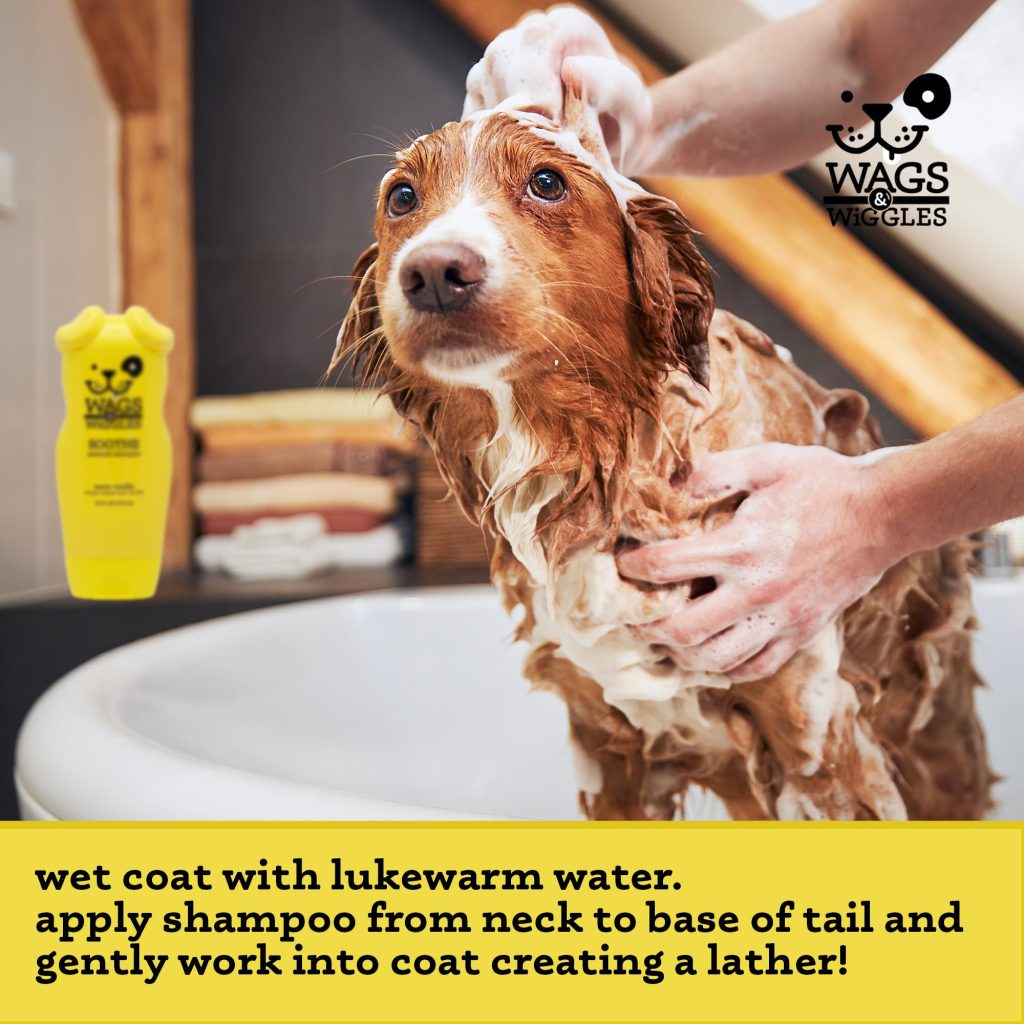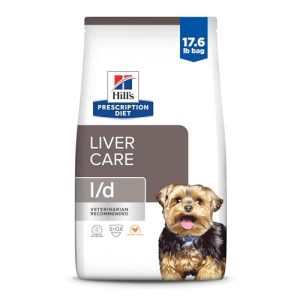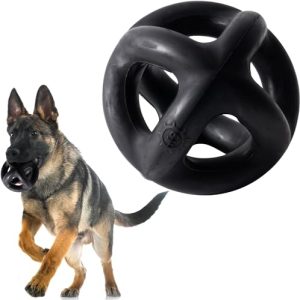Are you wondering what you can safely use as dog shampoo? Choosing the right product for your furry friend isn’t always easy.
You want something gentle, effective, and free from harmful chemicals. But with so many options out there, how do you know what’s best? You’ll discover simple, safe alternatives that can keep your dog’s coat clean and healthy without the guesswork.
Keep reading to find out exactly what you can use—and what you should avoid—when it comes to washing your dog.
Common Ingredients In Dog Shampoos
Choosing the right dog shampoo can feel overwhelming with so many options on the market. Understanding the common ingredients helps you pick a product that keeps your dog’s coat clean without causing irritation. Let’s break down what’s typically inside dog shampoos and what you should watch out for.
Harsh Chemicals To Avoid
Some dog shampoos contain chemicals that might harm your pet’s skin and coat. Ingredients like sulfates(such as Sodium Lauryl Sulfate) strip natural oils, leading to dryness and itchiness.
Parabensact as preservatives but can cause allergic reactions. Avoid shampoos with artificial fragrancesand colorants, which often trigger sensitivities in dogs.
Have you ever noticed your dog scratching more after a bath? It could be due to these harsh ingredients. Always check the label and skip products that list these substances.
Beneficial Natural Components
Look for shampoos with natural ingredients that soothe and nourish your dog’s skin. Aloe verais excellent for calming irritation and adding moisture.
Oatmealis another popular ingredient that helps relieve dryness and itching, especially in sensitive skin. Coconut oil or vitamin Ecan add shine and protect the coat.
Choosing shampoos with these components supports your dog’s skin health and keeps their fur soft and shiny. What natural ingredients does your dog respond well to?
Risks Of Using Human Shampoo On Dogs
Using human shampoo on dogs poses significant risks. Dogs have unique skin needs. Human products may not suit them. This mismatch can lead to various issues.
Ph Differences Between Humans And Dogs
Human skin has a different pH level than dogs. Humans typically have a pH of 5.5. Dog skin has a pH between 6.2 and 7.4. Using human shampoo can disturb this balance. An imbalance can cause skin problems for dogs.
Potential Skin Irritations
Human shampoos contain ingredients that may irritate dogs. Dogs have sensitive skin, unlike humans. Chemicals in human shampoos can cause redness and itching. Prolonged use may lead to severe skin reactions. Always choose products formulated for dogs.
Safe Natural Alternatives
Choosing a safe, natural shampoo for your dog helps protect their skin and coat. Many commercial shampoos contain harsh chemicals that can irritate sensitive skin. Natural alternatives offer gentle cleansing without harmful additives. These options also nourish the skin and maintain your dog’s natural oils.
Natural shampoos suit dogs with allergies or dry, itchy skin. They are easy to find or make at home. Here are some safe, natural alternatives to consider for your dog’s bath time.
Oatmeal-based Washes
Oatmeal soothes dry and itchy skin effectively. It gently cleans without stripping natural oils. You can buy oatmeal shampoos or make a wash by grinding plain oats and mixing with water. This mixture calms irritation and softens the coat.
Aloe Vera Solutions
Aloe vera has natural healing properties for skin. It relieves inflammation and moisturizes dry patches. Use pure aloe vera gel diluted with water as a mild wash. This solution refreshes the skin and reduces redness.
Coconut Oil Cleansers
Coconut oil cleans and conditions your dog’s coat well. It kills bacteria and fungi while moisturizing the skin. Mix coconut oil with water or mild soap for a natural cleanser. Avoid using too much as it can leave the coat greasy.
Apple Cider Vinegar Rinses
Apple cider vinegar balances the skin’s pH and fights odors. Dilute it with water before use to prevent irritation. This rinse removes dirt and brightens the coat. It also helps control itching and dandruff naturally.
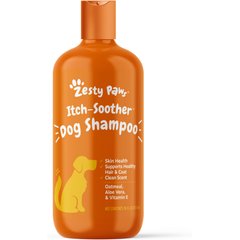
Credit: www.petmd.com
Diy Dog Shampoo Recipes
Creating your own dog shampoo at home can be a rewarding way to ensure your furry friend gets a gentle, natural clean without harsh chemicals. These DIY recipes use ingredients you might already have in your kitchen or garden, making bath time both cost-effective and safe.
Each recipe offers unique benefits tailored to different coat types and skin sensitivities. Have you ever wondered if simple household items could replace commercial shampoos while still keeping your dog’s coat shiny and healthy? Let’s explore some easy options you can mix up quickly.
Simple Oatmeal Shampoo
Oatmeal is excellent for soothing itchy and dry skin on dogs. To make this shampoo, grind 1 cup of plain oats into a fine powder using a blender or food processor.
- Mix the oat powder with 1 cup of warm water to form a paste.
- Add a few drops of mild liquid castile soap for gentle cleansing.
- Massage the mixture onto your dog’s wet coat and rinse thoroughly.
This recipe calms irritation and leaves the coat feeling soft. Have you noticed your dog scratching after baths? Oatmeal could be the answer.
Aloe And Coconut Blend
Aloe vera and coconut oil combine to create a moisturizing shampoo perfect for dogs with dry or sensitive skin. Start with 1/4 cup of pure aloe vera gel and add 1/4 cup of liquid coconut oil.
- Mix in 1/2 cup of gentle liquid castile soap.
- Optional: Add 5 drops of lavender essential oil for a calming scent.
- Apply to your dog’s coat, rub gently, and rinse well.
This blend helps soothe and hydrate while leaving a subtle fragrance. Have you tried natural oils for your dog’s skin care before? It might be time to experiment.
Gentle Vinegar Rinse
Apple cider vinegar can balance your dog’s skin pH and reduce odors. After shampooing, mix 1 part apple cider vinegar with 3 parts water.
- Pour the solution over your dog’s coat as a final rinse.
- Be careful to avoid eyes and open wounds.
- Let it air dry or towel dry as usual.
This rinse leaves the coat shiny and helps repel fleas naturally. Could this be the simple addition missing from your dog’s grooming routine?
Tips For Bathing Your Dog
Bathing your dog is more than just a routine chore—it’s a chance to connect and care for their health. Getting the details right can make the experience pleasant for both you and your furry friend. Here are some practical tips to help you bathe your dog effectively and safely.
Choosing The Right Water Temperature
Water that’s too hot or too cold can make your dog uncomfortable or even cause harm. Aim for lukewarm water, similar to what you’d use for a baby’s bath. Test it on your wrist before applying it to your dog’s coat to ensure it feels just right.
Cold water can make your dog shiver and resist the bath next time. Hot water might dry out their skin or cause burns. Have you ever noticed how a slight temperature change can shift your dog’s mood instantly?
How Often To Bathe
Bath frequency depends on your dog’s breed, coat type, and lifestyle. Dogs with oily skin or those that spend a lot of time outdoors may need baths every 3 to 4 weeks. On the other hand, dogs with dry or sensitive skin might only require a bath once every 6 to 8 weeks.
Keep an eye on your dog’s odor and coat condition. If they start to smell or their fur gets greasy, it’s time for a wash. Have you considered how over-bathing can strip natural oils and cause irritation?
Proper Rinsing Techniques
Rinsing is just as important as shampooing. Leftover soap can cause itching and dryness. Use a gentle spray or cup to rinse thoroughly, making sure no suds remain in their fur.
Start rinsing from the neck down to avoid water and shampoo getting into their eyes and ears. Patience during rinsing helps prevent skin problems later. How often do you check your dog’s skin for residue after baths?
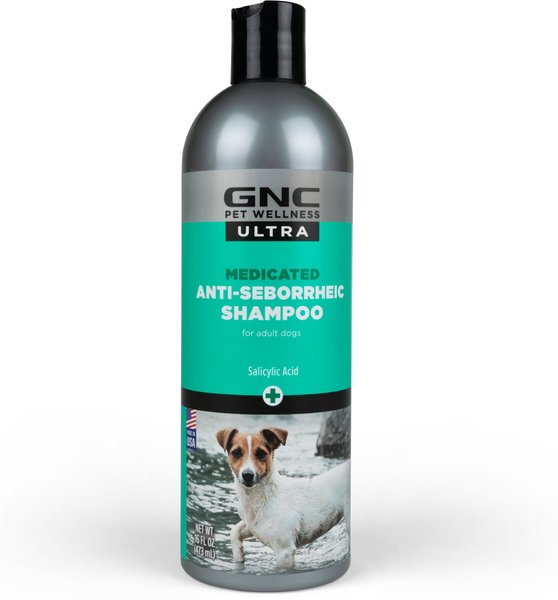
Credit: www.chewy.com
When To Consult A Veterinarian
Knowing when to consult a veterinarian about your dog’s skin health is essential. Using the wrong shampoo or ignoring symptoms can worsen your pet’s condition. Keep an eye on your dog’s behavior and skin to catch problems early.
Signs Of Skin Allergies
Watch for constant scratching, redness, or swelling. These can signal an allergic reaction to something in your dog shampoo or environment. If your dog suddenly develops flaky skin or bald patches, it’s a red flag.
Allergies can cause discomfort and lead to more serious issues if untreated. Have you noticed your dog rubbing its face or licking paws excessively? That could mean it’s time to check with a vet before trying another shampoo.
Persistent Irritation Or Infections
If irritation doesn’t improve after a few washes or gets worse, don’t wait. Persistent redness, oozing sores, or a foul smell suggest an infection. These conditions require professional treatment, not just a change in shampoo.
Ignoring infections can lead to painful complications. When your dog’s skin looks worse instead of better, that’s a clear sign to seek veterinary advice. Your vet can recommend the safest products and possibly prescribe medication to heal your dog’s skin properly.

Credit: www.pawparentacademy.com
Frequently Asked Questions
What Ingredients Are Safe In Homemade Dog Shampoo?
Safe homemade dog shampoos use gentle ingredients like oatmeal, baking soda, and mild dish soap. Avoid harsh chemicals and essential oils that irritate sensitive skin. Always test a small area first to ensure no allergic reactions occur.
Can I Use Human Shampoo On My Dog?
Human shampoos are not ideal for dogs as their pH levels differ. Using human shampoo can dry out your dog’s skin and cause irritation. Always choose shampoos formulated specifically for dogs for best results.
How Often Should I Bathe My Dog With Shampoo?
Bath frequency depends on your dog’s breed and activity. Generally, bathing once a month is enough for most dogs. Overbathing can strip natural oils and cause dry skin, so avoid excessive shampooing.
Are Natural Dog Shampoos Better Than Commercial Ones?
Natural dog shampoos usually contain fewer chemicals and artificial fragrances. They can be gentler on your dog’s skin and coat. However, always check ingredient lists and choose products suitable for your dog’s specific skin needs.
Conclusion
Choosing the right dog shampoo keeps your pet clean and healthy. Natural ingredients often work best for sensitive skin. Avoid harsh chemicals that can cause irritation or dryness. Always test a small amount first to watch for reactions. Regular baths help control odor and dirt build-up.
Remember, gentle care strengthens your bond with your dog. Simple, safe shampoos make grooming easy and stress-free. Your dog will feel happy and fresh after every wash.

Emily Barker is the founder of ChillDogLife.com, a space dedicated to helping pup parents discover the best dog products, lifestyle tips, and cozy ideas for happier homes.
A lifelong dog lover, Emily combines her passion for pets with a knack for research to share trusted recommendations on everything from toys and furniture to health and everyday care.
Her goal is simple: to make life easier, stylish, and more joyful for dogs and the people who love them.
